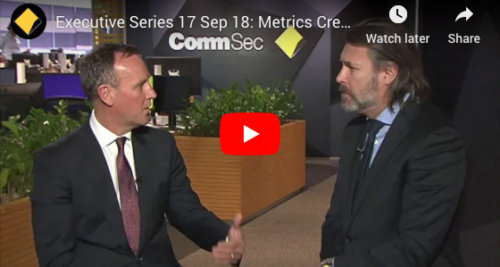Reaping the Potential Benefits of Commercial Real Estate Debt
It is possible to earn income from commercial real estate (CRE) without buying a stake in property. The basic premise behind such investments is now relatively well understood: to generate income by providing loans to borrowers who need capital for commercial real estate activities. The returns to investors come from the interest and fees paid to borrowers, minus fund costs.
More asset managers now offer funds that provide exposure to the CRE debt market and potential income of more than 8 per cent p.a.
This growing form of investment provides an additional layer of diversification for portfolios by generating returns uncorrelated to shares and bonds.
Global consulting firm EY has estimated1 that CRE lending accounted for $76 billion of the total $188 billion Australian private debt market in 2023.
Who are the borrowers?
The borrowers of a well-managed CRE debt fund are typically established commercial property investment or development firms with long track records of success in the sector.
The loans given to these firms are commonly used for either the acquisition, development or construction of CRE assets.
These assets could include any type of real property – from residential build-to-sell or build-to-rent developments to industrial, office or retail property. Specialty property projects – in areas such as healthcare facilities, student accommodation and data centres – are also commonly funded with private credit.
Examples of CRE activities funded by private debt include:
- Land purchase for future development
- Pre-construction activities after a development approval is granted
- Construction of a property to completion
- Refurbishment or repositioning of a property
- The acquisition of completed properties for rental income
- Residual stock, or take-out loans, for developers who wish to retain some of the remaining dwellings after a project is complete; and
- The acquisition of properties by a business that will operate from it.
Private debt managers aim to diversify portfolios across all the above, with capital typically spread across more than 100 borrowers to reduce the risk of loss. An additional layer of diversification is obtained by ensuring the loans in a portfolio are allocated to different property types, geographic locations and lifecycle stage.
Greater diversification again can be achieved in large parts of the market with distinct subsectors. Residential property is one example asloans can be spread across property types such as land subdivisions, medium density buildings or high-density buildings.
Market dynamics
The strong fundamentals of residential and industrial development projects in major Australian metropolitan precincts can make them an area of focus for CRE debt funds with sufficient scale to capitalise on the opportunities.
A growing urban population – underpinned by strong net migration – is driving demand for new properties in big cities to resolve the nation’s well-documented housing shortage. Additionally, the growth in logistics due to ecommerce bodes well for industrial properties like warehouses and distribution centres that are used to facilitate the delivery of goods.
The limited availability of capital for projects due to banks reducing their funding for CRE means there is a strong pipeline of transactions for private debt managers with the necessary relationships to source the best opportunities in the market. This is particularly true in major metropolitan areas as there is greater market depth among both buyers and sellers than in regional markets.
However, not every private debt manager is able to capitalise on the dynamics that can make CRE debt a worthwhile investment.
Success in this arena demands, firstly, a deep industry network that allows managers to directly originate loans and build scale. It then requires an ability to negotiate appropriate loan terms to deliver optimal returns to investors and preserve their capital. Finally, it requires strong risk management capabilities and experience in loan restructuring.
When selecting a CRE debt fund, it’s important to consider the scale, credit skills, and track record of private debt managers, as these factors can influence the potential outcomes in this space.
ABOUT METRICS
Metrics is an Australian alternative asset management firm that manages around $23 billion of private debt and private equity investments. $13 billion of this figure is invested in the Australian CRE sector2. We believe this establishes Metrics as one of the largest private credit investors in the commercial real estate sector, providing us unrivalled access to investment opportunities in this space.
Borrowers choose to engage with Metrics due to the quality of our team and our demonstrated capacity to efficiently execute on transaction opportunities.
Since inception in 2013, Metrics has committed $39 billion across approximately 1,256 individual loan transactions across all loan market segments. Of this, Metrics has committed $22.6 billion to 735 CRE loan transactions, spanning the credit spectrum, locations across Australia and New Zealand and different stages of a project – including land purchase, pre-construction activities, construction, residual stock, or investment.
Other News
Metrics response to ASIC’s report on Advancing Australia’s Evolving Capital Markets
Attributable to Metrics Group CEO and Managing Partner, Andrew Lockhart: Metrics Credit Partners (“Metrics”) welcomes ASIC’s roadmap to promote strong,…
Livewire Interview – Why Private Debt remains a compelling opportunity
At a time where seemingly everything is in a bull market, thoughts inevitably turn to what happens next and how…
INSIGHTS
MCP Income Opportunities Trust (MOT) lists on ASX
Sydney, 29 April 2019: The Trust Company (RE Services) Limited (ABN 45 003 278 831) (Responsible Entity) is the responsible…
MCP Master Income Trust wins Lonsec Listed Fund Award
The award came a year after MXT was listed on the Australian Securities Exchange






